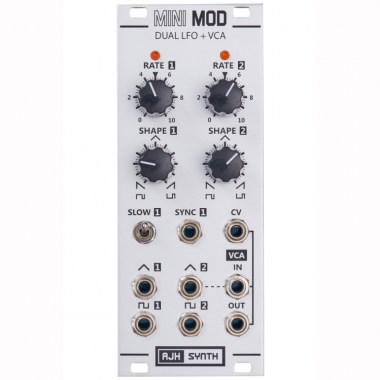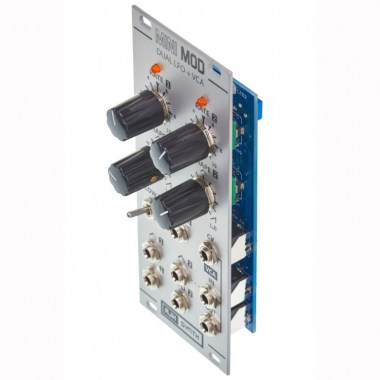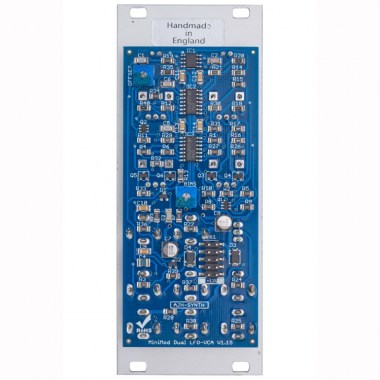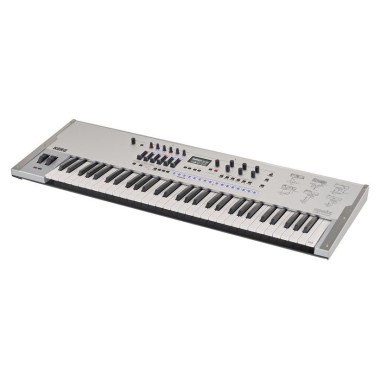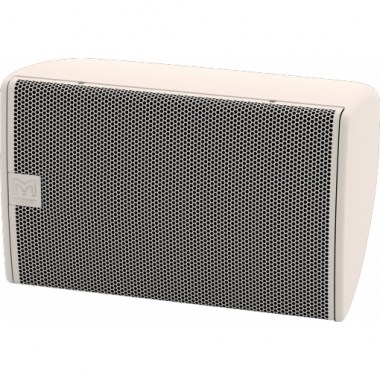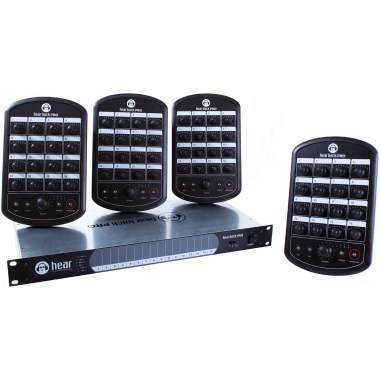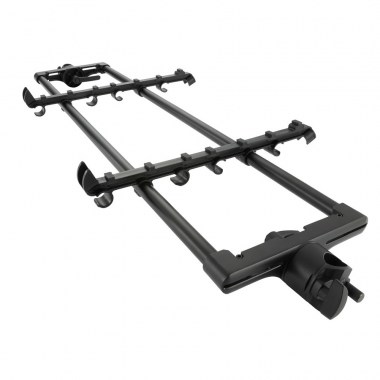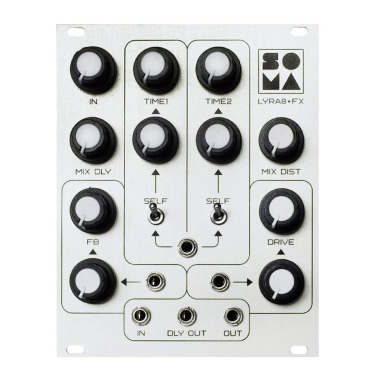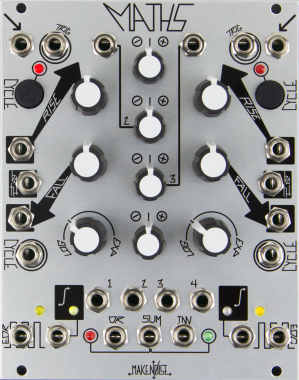 Купить Eurorack модули AJH MiniMod Dual LFO + VCA silver
Купить Eurorack модули AJH MiniMod Dual LFO + VCA silver Логин или Создать аккаунт
AJH MiniMod Dual LFO + VCA silver
ПроизводительAJH Synth
Доступность:на заказ
Артикул:572354
AJH MiniMod Dual LFO + VCA silver Eurorack модули AJH MiniMod Dual LFO + VCA silver Вы можете купить по выгодной цене в наших музыкальных магазинах в Москве и Санкт-Петербурге, интернет-магазин, доставка по России.
Этот товар поставляется на заказ. Уточним доступность или предложим замену!
Описание
The Dual LFO + VCA comes equipped with two low-frequency oscillators, each featuring a triangle and a pulse output. Utilizing two of the module’s potentiometers, the shape respectively width of the waveforms can be adjusted. Therefore, it is easily possible to transform a triangle into a saw tooth or ramp wave. – Or anything in between. The other potentiometers allow users to adjust the LFO rates. Additionally, the first modulator features a switch for changing its tempo range plus there is a Sync input. The second LFO is normalized to the module’s linear VCA. It can be controlled via a CV input. This setup is very handy for regulating the low frequency oscillator’s modulation depth via, for instance, the modulation wheel of a keyboard.
The Dual LFO + VCA comprises two independent LFOs, each features potentiometers for rate adjustments as well as shaping the waveforms generated. Results can be tapped off two outputs, which are marked with triangle and square symbols. The maximum frequency usable for each LFO is dependent on the setting of its shape potentiometer:
Shape in middle position (Triangle / Square): 0.15 Hz to 25 Hz
Shape completely clockwise / counterclockwise (saw or ramp / pulse): 0.15 Hz to 1 kHz
By activating the circuit’s slow function, it is possible to gauge the first LFO to a frequency range of 0.01 Hz to 2 Hz. Furthermore, there is a Sync input.
The triangle output of the second LFO is normalized to the module’s linear VCA, which can be controlled via CV voltages. As soon as a cable is plugged into the amplifier’s input, signals coming from the low frequency oscillator are ignored.

